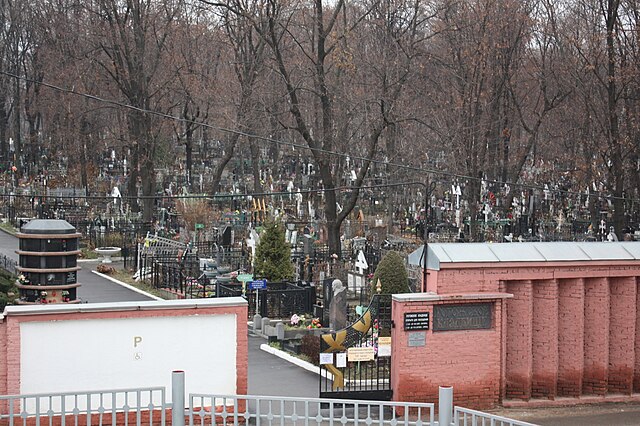Rogozhskoe cemetery in Moscow, Russia, is the spiritual and administrative center of the largest Old Believers denomination, called the Russian Orthodox Old-Rite Church. Historically, the name cemetery was applied to the whole Old Believer community, with living quarters, cathedral, almshouses, libraries, archives and the Old-Rite Institute. Actual 12 hectare cemetery is now a non-denominational municipal burial site; the Old Believers operate a closed spiritual community in the southern part of the historical Rogozhsky township, while Russian Orthodox church operates church of Saint Nicholas, located between the cemetery and Old Believer territory.
Rogozhskoye Cemetery
Eastern suburbs of Moscow in 1848. Rogozhskoe Cemetery in red.
Cathedral of Protection
Church of Nativity
Old Believers or Old Ritualists are Eastern Orthodox Christians who maintain the liturgical and ritual practices of the Russian Orthodox Church as they were before the reforms of Patriarch Nikon of Moscow between 1652 and 1666. Resisting the accommodation of Russian piety to the contemporary forms of Greek Orthodox worship, these Christians were anathematized, together with their ritual, in a Synod of 1666–67, producing a division in Eastern Europe between the Old Believers and those who followed the state church in its condemnation of the Old Rite. Russian speakers refer to the schism itself as raskol (раскол), etymologically indicating a "cleaving-apart".
Vasily Surikov's Boyarynya Morozova (1887), depicting the defiant Feodosia Morozova during her arrest. Her two raised fingers refer to the dispute about the proper way to make the sign of the cross.
Boyaryna Morozova showing two fingers, painting by Surikov – detail, sketch 04 from Tretyakov gallery
A 6th-century icon, the Christ Pantocrator, depicting Christ giving a blessing. Two digits appear straightened, three folded. The Old Believers regard this as the proper way of making the sign of the Cross.
Russian Orthodox Old-Rite Church paschal procession in Guslitsa, Moscow region, 2008








